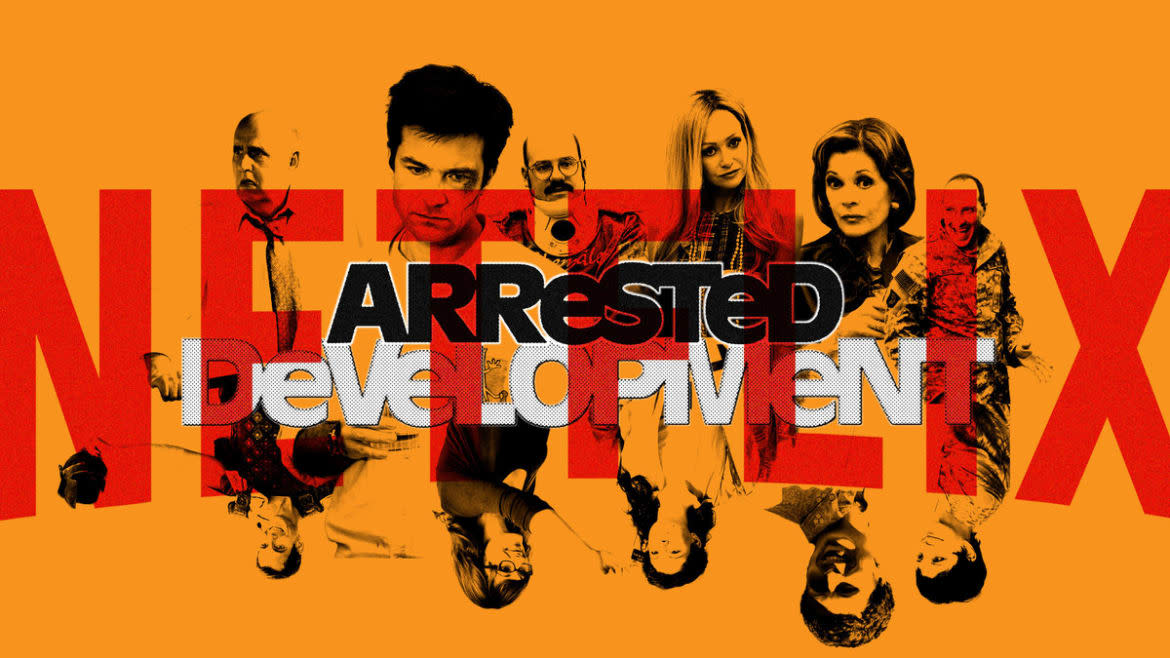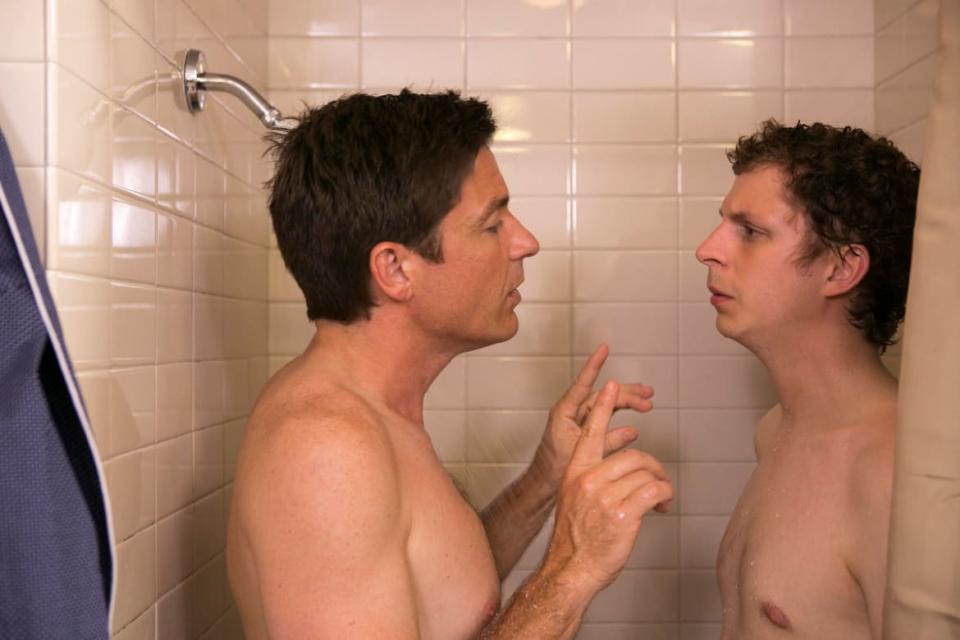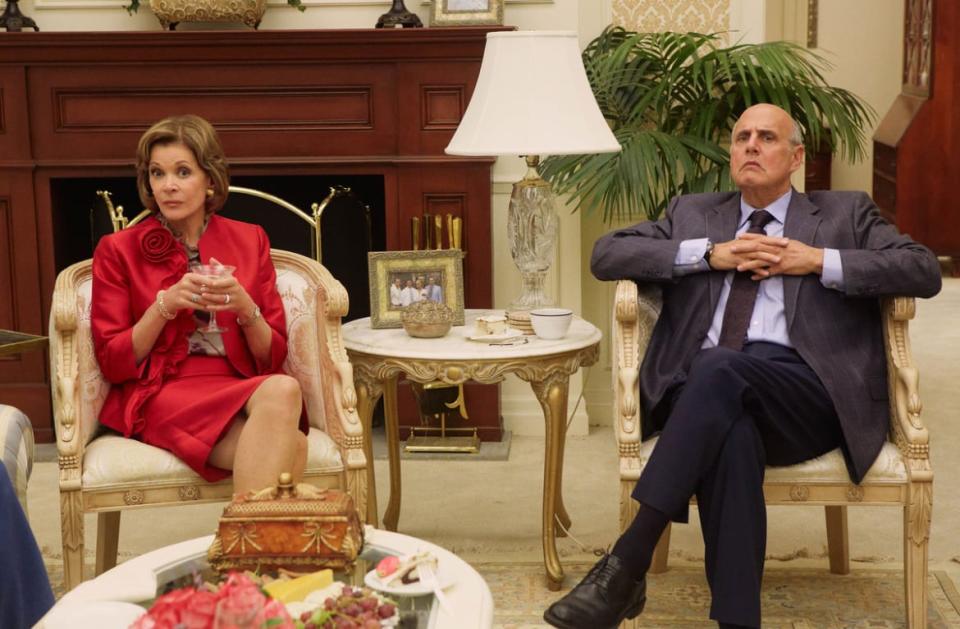Netflix’s Ambitious ‘Arrested Development’ Revival Deserved Better

- Oops!Something went wrong.Please try again later.
- Oops!Something went wrong.Please try again later.
This coming May marks 10 years since the premiere of Netflix’s Arrested Development revival, though you’re not going to have an easy time finding it on the platform’s homepage.
You’ll be pointed, instead, toward something called Arrested Development: Fateful Consequences, a “remix” that reshuffles Season 4’s controversially nonlinear narrative into chronological order. Its stated purpose is understandable: The show’s creator, Mitch Hurwitz, told the Television Critics Association in 2016 that he wanted to get a jump on future syndication deals by making a broadcast-TV-friendly version himself to avoid risking the undertaking to a third party later on. By all means!
The only problem is, upon its release in 2018, this Season 4 redux immediately replaced the original version on Netflix; the first “remixed” episode, “Re Cap’n Bluth,” now automatically plays after the last episode of Season 3—a.k.a. the original series finale.
‘Arrested Development’: Why Netflix’s Revival Failed
For now, you can access Season 4’s original 15 episodes in the show’s “Trailers and More” tab, like some rare behind-the-scenes oddity. At least, in theory; the episodes seem to disappear and reappear from their new home at random, which fans have reported as an ongoing problem for the last few years. If and when Arrested Development does leave Netflix (as it looked like it might earlier this year) it’s hard to imagine both versions of the season moving with it.
Netflix’s decision to replace Season 4 with a broadcast TV-minded edit shows a baffling misunderstanding of the show’s history, let alone the streamer’s own role in it. For basically the entirety of its original three-season run on Fox, Arrested Development struggled to find an audience. “The tough thing about this show is that it does reward those who pay attention,” Hurwitz lamented to Fresh Air, upon the show’s cancellation in 2005. “We’re making a show for DVD.” Streaming turned out to be an even more flattering venue for it, and the show eventually asserted its cult status after becoming an early staple on Netflix’s online library.
When Netflix eventually revived the show, as part of its first slate of original programming in 2013, the fourth season arrived keen to inhabit its new format. As a result, Arrested Development’s return appeared almost hostile to traditional TV-viewing approaches. Originally conceived as a creative workaround for the logistical difficulty of scheduling a now-much-busier ensemble cast, the new season adopted an unusual nonlinear structure, wherein each episode focused on the exploits of a different character over roughly the same period of time. Early reception, particularly to that challenging and uncomfortable structure, was polarizing. By 2014, Hurwitz was already discussing a chronological recut.

The first few episodes suffer from some obvious growing pains, but once Season 4’s idiosyncratic narrative structure clicks into place, it becomes a perfect playground for the exact style of long-form joke writing that set the show apart in its first three seasons. At the height of its power, Arrested Development’s most impressive ability was taking a basic (or even bad) joke—the name Lucille, for instance, sounds like “loose seal”—and laying it at the end of such an obsessively, gleefully detailed Rube Goldberg-machine of a setup that the sheer magnitude of its execution became the funny part.
A much wider scope, unburdened from the confines of weekly episodes and the linear reveal of information, allows the season’s most ambitious and coy long-form jokes to actually catch the viewer off-guard in a unique way. We spend most of the season, for instance, hearing about “Fakeblock,” a massive new software startup developed by George Michael (Michael Cera). When we finally get George Michael’s side of the Fakeblock story near the end of the season it begins with a scene set years earlier, in which he laments the lack of good virtual instrument apps for woodblock players. At some point during this scene, we realize that we’re getting a punchline to a very bizarre, very long-running joke that we probably never realized was being told.
Even when it’s obvious that we’re only getting half the joke, we’re still better off for the delayed payoff. There’s a scene in the first Lindsay-centric (Portia de Rossi) episode, Episode 3, where her husband Tobias (David Cross) gestures out of the window of their realtor’s office and explains, “As you can see, I’m ready for a lot that’s new;” their realtor (Ed Helms) looks out the window at Tobias’s car and recoils a little. The punchline to the joke comes two episodes later, when we learn that Tobias, rebranding himself for “a new start,” has purchased a vanity license plate reading “ANUSTART.”
Later in the episode, the scene replays with an added cutaway to the license plate, but that secondary version of the joke is so much less funny than the one you get a few scenes earlier, if you’re keeping track. A chronological edit, though, inherently can only ever have that secondary, more obvious version of the joke. This makes for one of the fundamental problems of the remix: The jokes are there, but they’re frequently stripped of the acrobatic execution that actually makes them feel like Arrested Development jokes. Even worse, the complex deliveries that do survive the editing process get over-narrated and recapped, in case you’re some guy catching it on a rerun.
It’s wild just how much of the heavy lifting, with regard to comedic timing, is happening on a structural level in Season 4. The sequencing, by its nature, is saddled with a lot of repetition. But in the original cut, Hurwitz and co-director Troy Miller find a lot of inventive ways to mitigate the threat of tediousness, by using it to reinforce subtextual jokes or find new jokes in old scenes, flipping the context on its head.
One scene early on appears at first to be just an intimate meeting between Michael Bluth (Jason Bateman), his parents (Jeffrey Tambor and the late, great Jessica Walters), and their lawyer, until about halfway through, when his parents’ announcement of a divorce elicits a violent reaction from their youngest son Buster (Tony Hale). He, apparently, has been there the whole time. The scene then pops up seven more times, each instance revealing another family member in the room until finally, in Episode 13, we learn that the setting is actually a birthday party for George Michael.

The slow reveal of the scene’s masterful staging, with each Bluth posed and placed in some characteristic way around the room, ends up becoming its own joke about the family members’ remarkable ability to make any occasion about his or her self. According to Hurwitz, that party scene is the only one the cast filmed all together, which makes it even funnier and more pointed to see it parsed out the way it is; the most common criticism of the season (which Hurwitz and Miller could have clearly anticipated) was the loss of the group dynamic, after all. Here, that seeming bug becomes a feature, as the original cut self-consciously positions itself around the question of what happens to the narcissistic Bluths when they actually do become the main characters of their own stories.
That clarity of purpose gets immediately muddled by the remix’s attempt to redistribute the main cast evenly throughout its 22 episodes, exacerbating the problem by flattening out the impact of the few scenes where they do appear together. Honestly, it’s remarkable how often Fateful Consequences manages to turn lemonade back into lemons. Single-episode supporting characters become interminable, season-long fixtures, and uncomfortable plotlines that had once been mercifully self-contained, like a gross love triangle between Michael, George Michael (his son), and actress Rebel Alley (Isla Fisher), are stretched out over much longer periods.
‘Arrested Development’ Director Paul Feig Remembers Jessica Walter
None of this is to say that the original version of Season 4 is a perfect season of TV. It’s plagued by poorly aged jokes and about 100-percent too much Andy Richter, and its self-aware tone frequently tips over into obnoxious preciousness. But in its best moments, if you’re willing to grant it a little patience, it’s pretty remarkable to watch Netflix’s Arrested Development turn its primary obstacle into a springboard for some of the most inventive, ambitious, and rewarding comedy writing ever put to TV or streaming.
Ten years later, we still haven’t really seen anything like it. And Netflix’s apparent eagerness to center a broadcast-TV translation of one of the streaming era’s first prestige comedies is a pretty stark reminder that we’ve failed to realize even a fraction of streaming’s unique potential.
Get the Daily Beast's biggest scoops and scandals delivered right to your inbox. Sign up now.
Stay informed and gain unlimited access to the Daily Beast's unmatched reporting. Subscribe now.

